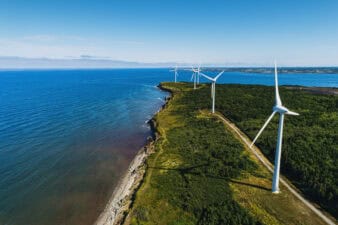Utilities have fallen into disfavour with the market as concerns over the impact of interest rates and the rising cost of financing weighs on their outlook. One little-known and appealing means of gaining exposure to utilities is independent electricity generator Maxim Power Corp. (TSX:MXG), which has lost 12% since the start of 2018. Any investment in the company does come with considerable risk because it is a microcap stock that’s been busily reconfiguring its operations.
Now what?
Maxim owns the HR Milner Generating Station in Alberta, a dual turbine plant capable of burning natural gas and coal. The company anticipates that despite Alberta’s tough stance on coal-fired electricity generation, it will be able to run the plant at full capacity until 2019, after which it will operate at 9% of capacity for another 10 years.
It resumed producing electricity at the facility on 13 June 2018 after determining that it was economic to do so because of higher Alberta power prices.
This was evident from its second-quarter 2018 results, where the average market power price in Alberta was $55.92 per megawatt hour produced (MWh), which was more than double the equivalent quarter in 2017. In fact, for the quarter, Maxim received an average price of $95.61 per MWh sold compared to $19.23 a year earlier.
Because of this marked increase in realized prices, Maxim reported net income of $2.8 million for the second quarter, a significant improvement over the $40 million loss reported for that quarter during 2017.
What is most important to note about Maxim’s results is that it finished the second quarter with $90.5 million in cash and no debt except for decommissioning liabilities totaling almost $14 million. That means that higher interest rates will have little impact on the company for the foreseeable future.
To offset the risks associated with the coal-fired operations at the Milner facility, Maxim has three advanced development projects. The first is the Milner gas repowering and expansion, which combined will have capacity of 756 megawatts (MW), and the Deerland peaking station with capacity of 190 MW. Maxim is also conducting a resource assessment of a 200 MW wind project located in Jenner Alberta.
The first three projects are expected to be completed and operational by 2022, but Maxim has not made any firm commitments to advancing those projects. However, the company does believe that the Milner development represents the best option of unlocking value for shareholders, and it recently committed to purchasing a turbine generator for the site.
Maxim expects to fund these projects through existing cash and finance where required, although the amount of credit has yet to be determined.
Further Maxim’s cash holdings will be supplemented by the anticipated payment of approximately $40 million made in over payments between 2006 and 2016 to be reimbursed over issues relating to the Alberta Electric System Operator Line Loss Rule.
Management has also expressed a vote of confidence in the company and its ability to successful complete its strategic plans by implementing a share buyback, where it plans to acquire up to 3.1 million common shares. By the end of the second quarter, it had purchased and cancelled almost 1.5 million shares at an average price of $2.43, which is just over 3% higher than its current market price.
So what?
Any investment in Maxim is a gamble because of its main assets being under development and the uncertainty surrounding Alberta electricity prices.
Nevertheless, its solid financial position, including no long-term debt and considerable cash on hand along with the share buyback, indicates that Maxim can indeed execute its plans. When it has provided evidence of the successful commencement of operations once the Milner has conversion and expansion are complete, its stock should soar.








